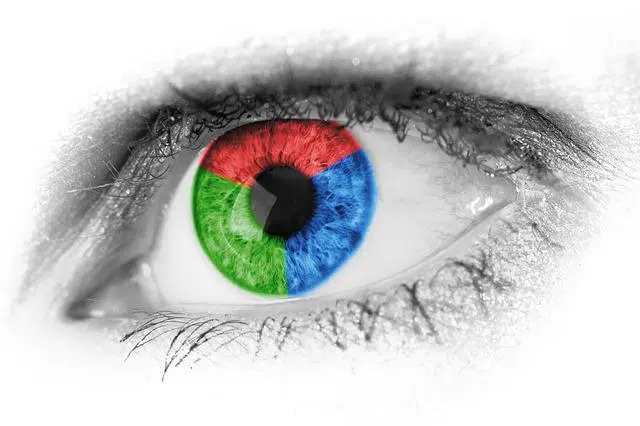
Primary colors are defined by the eye's response to light frequencies.
Color is a term that has its etymological origin in the Latin language . This is the name given to the sensation that light rays produce in the organs of sight.
The primary adjective , meanwhile, can describe the essential or the elemental. Another meaning refers to what appears, is located or develops first.
What is a primary color
Taking these definitions into account, we can move forward with the concept of primary color . This is the name, according to the Royal Spanish Academy ( RAE ), of the color whose obtaining is not possible by mixing other tones .
Previously known as primitive colors , their determination depends on the coloration model considered. The scheme called RYB , whose name comes from the English words red , yellow and blue , establishes that the primary colors are red , yellow and blue . Other schemes contemplate the inclusion of black , magenta , cyan or green .

It is possible to differentiate between primary colors, secondary colors and tertiary colors.
physiological response
It is important to highlight that the set of primary colors, beyond the different considerations, is based on the reaction of the photosensitive cells of the eyes to the various light frequencies. This means that they are not determined by an intrinsic property of light; Its definition is based on the eye's response to the stimulus.
The theory indicates that colors are infinite due to the characteristics of light and wavelengths. Human eye sensitivity, on the other hand, is limited. The cones (the photosensitive cells of the retinas) only respond to wavelengths that correspond to blue light, green light and red light.
For this reason, it is often stated that the primary colors are those three. As these shades have the ability to stimulate the retinal receptors, they open up a wide range of combinations.
Historical evolution of primary colors
It is often said that the person who first postulated the existence of primary colors was the English physicist and mathematician Isaac Newton . In his book “Opticks” , published in 1704 , he recognized the existence of seven essential colors. Newton relied on the preponderance he detected in some tones of the spectrum produced by a prism .
More than a century later, in 1810 , Johann Wolfgang von Goethe recognized six colors in his work “Theory of Colors” , dividing them between primary and secondary colors. With the advancement of history and multiple investigations, a clearer distinction was forged between the colors that are considered primary, primitive or essential and the rest.
Other classifications
The fact that there are primary colors means that other tones do not fall into this grouping . In this framework, we can also talk about secondary colors and tertiary colors .
A secondary color is formed when two primary colors are combined in identical proportions. According to the RGB model ( red , green and blue ), if green is added to red, for example , yellow is obtained.
When a primary color is mixed with a secondary color, a tertiary color is born. It is frequently indicated that a color of this class is an intermediate tone between a primary tone and a secondary tone.
